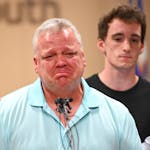Tensions are running high between some University of Minnesota students and campus police. But student activists have made a number of unreasonable demands while the focus should be on better student-police cooperation and improved public safety.
In a letter to administrators last month, student government leaders demanded that U Police Chief Matthew Clark resign. They argue that as a former Minneapolis police officer, his embrace of MPD culture has caused the "traumatization we see in our local marginalized communities … and having a police chief ... from that department is only making our community less safe and inclusive." Several dozen students and about a dozen faculty signed the letter.
University leaders should, of course, listen to student concerns and take action when appropriate. But they should not give in to unreasonable demands that would do nothing to make the campus and surrounding neighborhoods safer.
The calls to fire the chief, cut ties with other law enforcement agencies and require no-excuse-required extensions on class assignments for some Black, Muslim and some students involved in protests go too far.
And as university student Benjamin Ayanian wrote in a recent Star Tribune Opinion commentary, "irresponsible" rhetoric from some students — including suggesting fake calls to use up police resources — just fans the flames of tension between campus police and students.
In fact, U leaders have made good-faith moves to improve campus safety and those efforts merit support. Last fall, an outside review of the U police department was done after students demanded more law enforcement accountability following George Floyd's death.
The review, conducted by Cedric Alexander, a former police chief and member of President Barack Obama's Task Force on 21st Century Policing, was released earlier this year and produced a long list of recommendations.
It confirmed that many students and employees said they fear being profiled and/or harmed by campus cops. Others talked about feeling unsafe walking at night, while officers reported feeling unappreciated by the campus community.
U President Joan Gabel agreed immediately to four of the recommendations: meeting regularly with the Minneapolis and St. Paul mayors on public safety responses, obtaining a safety app for students and employees, transferring oversight of the department to a university senior vice president, and outfitting campus officers with body cameras.
In addition, according to a U spokesperson, an advisory group of students, staff and faculty is being assembled to review other recommendations from the report as well as university policies about cooperation with other law enforcement agencies. There is also an open feedback form on the M Safe website to share public comments with the advisory group.
Some student activists have called for fewer or no campus officers, which is both unreasonable and shortsighted. A Minnesota Student Association survey of more than 2,000 students conducted last fall found that about 45% of students supported maintaining the department's size, 30% wanted more officers and 20% said there should be fewer.
Crime statistics from the area also support the need for police. In March, there were a few dozen burglaries, 22 car thefts, 13 aggravated assaults and a homicide reported in neighborhoods around the Twin Cities campus.
Improving safety at the U's Minneapolis campus won't come through overheated rhetoric, threats and outlandish demands. It will take cooperation between the police, administration and students.




